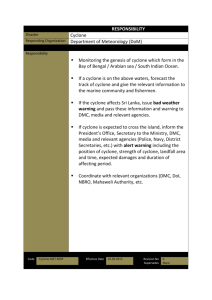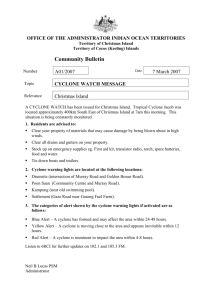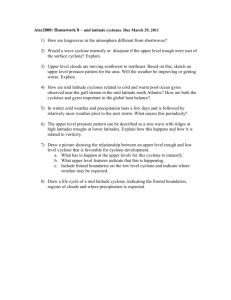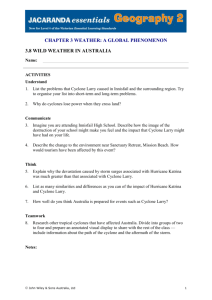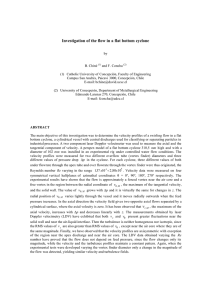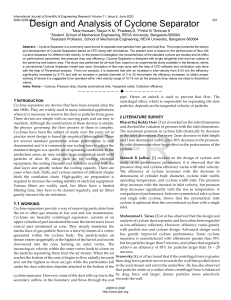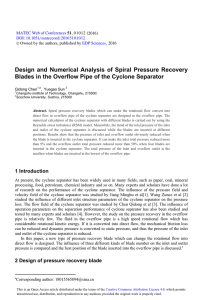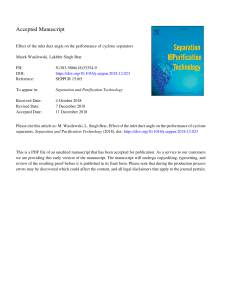How a Cyclone Works
advertisement
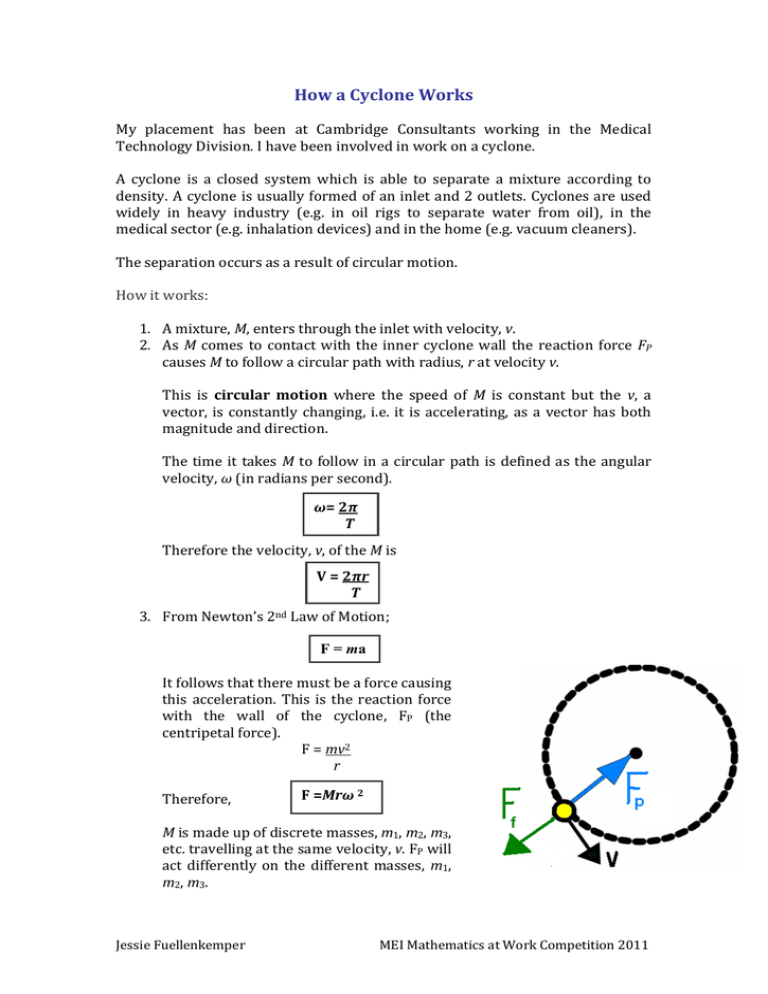
How a Cyclone Works My placement has been at Cambridge Consultants working in the Medical Technology Division. I have been involved in work on a cyclone. A cyclone is a closed system which is able to separate a mixture according to density. A cyclone is usually formed of an inlet and 2 outlets. Cyclones are used widely in heavy industry (e.g. in oil rigs to separate water from oil), in the medical sector (e.g. inhalation devices) and in the home (e.g. vacuum cleaners). The separation occurs as a result of circular motion. How it works: 1. A mixture, M, enters through the inlet with velocity, v. 2. As M comes to contact with the inner cyclone wall the reaction force FP causes M to follow a circular path with radius, r at velocity v. This is circular motion where the speed of M is constant but the v, a vector, is constantly changing, i.e. it is accelerating, as a vector has both magnitude and direction. The time it takes M to follow in a circular path is defined as the angular velocity, ω (in radians per second). ω= 2π T Therefore the velocity, v, of the M is V = 2πr T 3. From Newton’s 2nd Law of Motion; F = ma It follows that there must be a force causing this acceleration. This is the reaction force with the wall of the cyclone, FP (the centripetal force). F = mv2 r Therefore, F =Mrω 2 M is made up of discrete masses, m1, m2, m3, etc. travelling at the same velocity, v. FP will act differently on the different masses, m1, m2, m3. Jessie Fuellenkemper MEI Mathematics at Work Competition 2011 4. M also experiences a buoyancy force, which occurs due to the difference in density of M, and the radial centripetal force, where density, ρ=m V Density, ρ, is proportional to m (therefore assume constant volume, V, for each discrete mass). 5. Denser objects encounter a large force towards the outside of cyclone, whereas the lower density objects experience a net force towards the centre of the cyclone. Particles moving inward will experience drag force (resisting the movement), and will be slow moving to the centre axis where they will be forced up, towards the top outlet. Particles following a path around the outside of the cyclone will travel at the same speed as M and will not experience drag, and will follow the “easiest” path swirling down to towards the bottom exit. (See green and orange flow paths in Figure 1) Figure 1 - Separation of Particles Modelling Fluids: A technique called Computational Fluid Dynamics (CFD) is used to analyse flow conditions using the Navier-Stokes – 2nd order differential equations and some assumptions. The user is required to model the object, in this case the cyclone, then split it up into smaller segments, and then run it through a solver having input specific conditions e.g. temperature, particle size etc. The solver uses an iterative process to converge to a solution. The user can then extract results to help understand the behaviour of the fluid in the geometry. Jessie Fuellenkemper MEI Mathematics at Work Competition 2011

